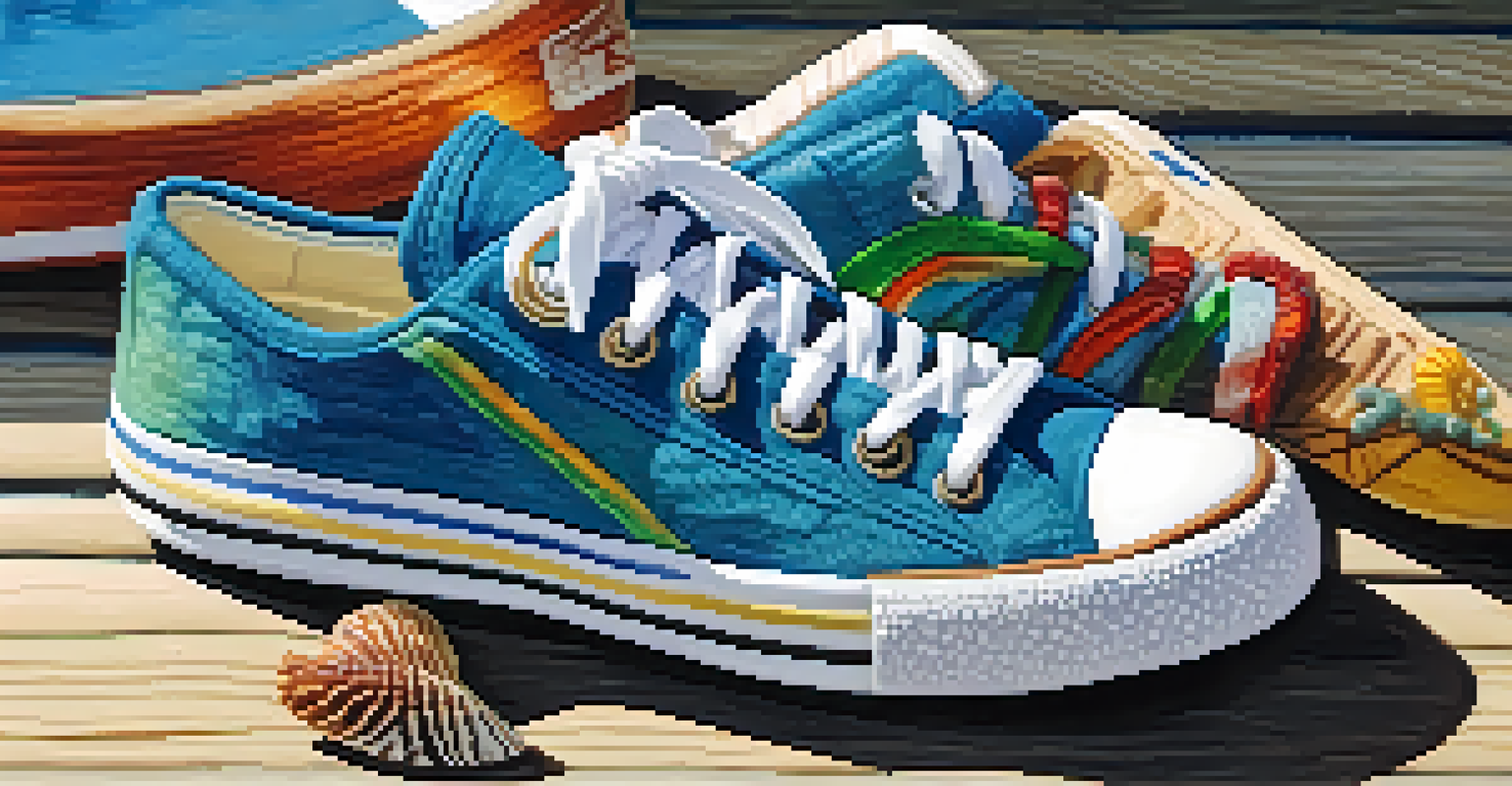Sustainable Fashion Collaborations: Merging Luxury with Purpose

The Rise of Sustainable Fashion Collaborations
In recent years, the fashion industry has seen a significant shift towards sustainability. Many luxury brands are recognizing the importance of ethical practices, leading to exciting collaborations that prioritize both style and purpose. These partnerships not only elevate brand images but also cater to a growing consumer demand for eco-conscious products.
Fashion is the armor to survive the reality of everyday life.
From high-end designers teaming up with environmental organizations to luxury retailers supporting local artisans, these collaborations reflect a broader trend of merging fashion with meaningful missions. For example, brands like Stella McCartney have long championed sustainable practices, setting a precedent for others to follow. This movement demonstrates that luxury can indeed be synonymous with responsibility.
As consumers become more aware of the environmental impacts of their purchases, luxury brands are adapting by creating products that tell a story. These collaborations allow brands to showcase their commitment to sustainability while appealing to a market that values transparency and ethical sourcing.
Impact on Consumer Choices and Trends
Sustainable fashion collaborations are reshaping consumer choices, encouraging shoppers to think critically about their purchases. When a luxury brand aligns with a sustainable cause, it creates a compelling narrative that resonates with consumers who want to make a difference. This shift is not just about aesthetics; it's about making informed choices that align with personal values.

For instance, the partnership between H&M and the Global Fashion Agenda highlights how even fast-fashion retailers can make strides toward sustainability. By offering limited collections that emphasize eco-friendly materials, they attract conscious consumers while also sparking interest in sustainable fashion trends. This blend of luxury and sustainability is appealing to a wider audience, from fashion enthusiasts to environmentally conscious shoppers.
Sustainable Fashion Gains Momentum
Luxury brands are increasingly collaborating with eco-conscious partners to meet consumer demand for ethical fashion.
As more brands adopt sustainable practices, it becomes a defining factor in consumer loyalty. Shoppers are increasingly drawn to brands that demonstrate a genuine commitment to environmental and social issues, shaping the future of fashion in a more responsible way.
Collaborations Showcasing Innovative Materials
One of the most exciting aspects of sustainable fashion collaborations is the focus on innovative materials. Designers are exploring alternative fabrics, such as recycled plastics and organic cotton, often resulting from partnerships with eco-friendly startups. These materials not only reduce waste but also inspire creativity in luxury design.
Sustainability is no longer a choice, but a necessity in fashion.
For example, the collaboration between Adidas and Parley for the Oceans has led to the creation of sneakers made from ocean plastic. This initiative not only raises awareness about ocean pollution but also promotes the idea that style and sustainability can go hand in hand. Such collaborations challenge traditional notions of luxury by integrating environmental responsibility into the very fabric of fashion.
By showcasing innovative materials, these partnerships pave the way for a new standard in the industry. They encourage other brands to rethink sourcing and production processes, ultimately leading to a more sustainable future for fashion.
The Role of Celebrity Endorsements
Celebrity endorsements play a crucial role in promoting sustainable fashion collaborations. When high-profile figures align themselves with eco-conscious brands, they amplify the message of sustainability and inspire their fans to embrace similar values. This influence can significantly impact consumer behavior and raise awareness about the importance of sustainable choices.
For instance, celebrities like Emma Watson and Leonardo DiCaprio have used their platforms to advocate for sustainable fashion. Their collaborations with brands that prioritize ethical production can shift public perception, making sustainable fashion more aspirational. This connection between celebrity culture and sustainability helps to bridge the gap between luxury and purpose.
Innovative Materials Redefine Luxury
Partnerships are leading to the use of sustainable materials, challenging traditional perceptions of luxury.
By leveraging the power of celebrity endorsements, sustainable fashion collaborations gain visibility and credibility. This not only drives sales but also fosters a community of consumers who are passionate about both fashion and environmental responsibility.
Challenges Facing Sustainable Collaborations
While sustainable fashion collaborations offer numerous benefits, they are not without challenges. One major hurdle is balancing luxury with affordability, as eco-friendly materials and ethical practices can often lead to higher production costs. This can make it difficult for brands to maintain their luxury status while also appealing to a broader market.
Additionally, ensuring transparency in the supply chain poses another significant challenge. Consumers are increasingly demanding to know the origins of their products, which requires brands to implement rigorous standards and practices. Collaborations must navigate these complexities while remaining true to their sustainable missions.
Despite these challenges, many brands are committed to overcoming obstacles in the name of sustainability. By fostering open communication and collaboration, they can create a more sustainable and ethical fashion landscape, paving the way for future innovations.
Consumer Education and Awareness
Education plays a vital role in the success of sustainable fashion collaborations. As consumers become more informed about the environmental and social impacts of their choices, they are better equipped to support brands that prioritize sustainability. This awareness can be cultivated through various channels, including social media campaigns and informative content.
Brands that engage their audience through storytelling and transparent communication can foster a deeper connection with consumers. By sharing the stories behind their collaborations, brands can highlight the importance of sustainability and encourage consumers to think critically about their purchases. This shift in mindset can drive demand for eco-conscious products.
Celebrity Influence on Consumer Choices
High-profile endorsements are crucial in promoting sustainable fashion and inspiring consumers to make responsible choices.
Ultimately, educating consumers about sustainable practices not only benefits brands but also contributes to a more sustainable fashion industry as a whole. When shoppers understand the value of their choices, they become advocates for change, supporting collaborations that make a positive impact.
The Future of Sustainable Fashion Collaborations
Looking ahead, the future of sustainable fashion collaborations appears promising. As consumer demand for eco-friendly and ethically produced products continues to rise, brands will likely seek out new partnerships that align with their sustainability goals. This could lead to innovative solutions and creative designs that redefine the luxury fashion landscape.
Moreover, advancements in technology and materials science may enable brands to explore even more sustainable practices. For instance, the development of biodegradable fabrics and innovative recycling processes could further enhance the role of sustainability in luxury fashion. Collaborations will play an essential role in driving these innovations forward.

As we move into a more environmentally conscious era, sustainable fashion collaborations are poised to become a defining feature of the industry. With luxury brands leading the charge, we can expect to see a future where style, purpose, and sustainability coexist harmoniously.